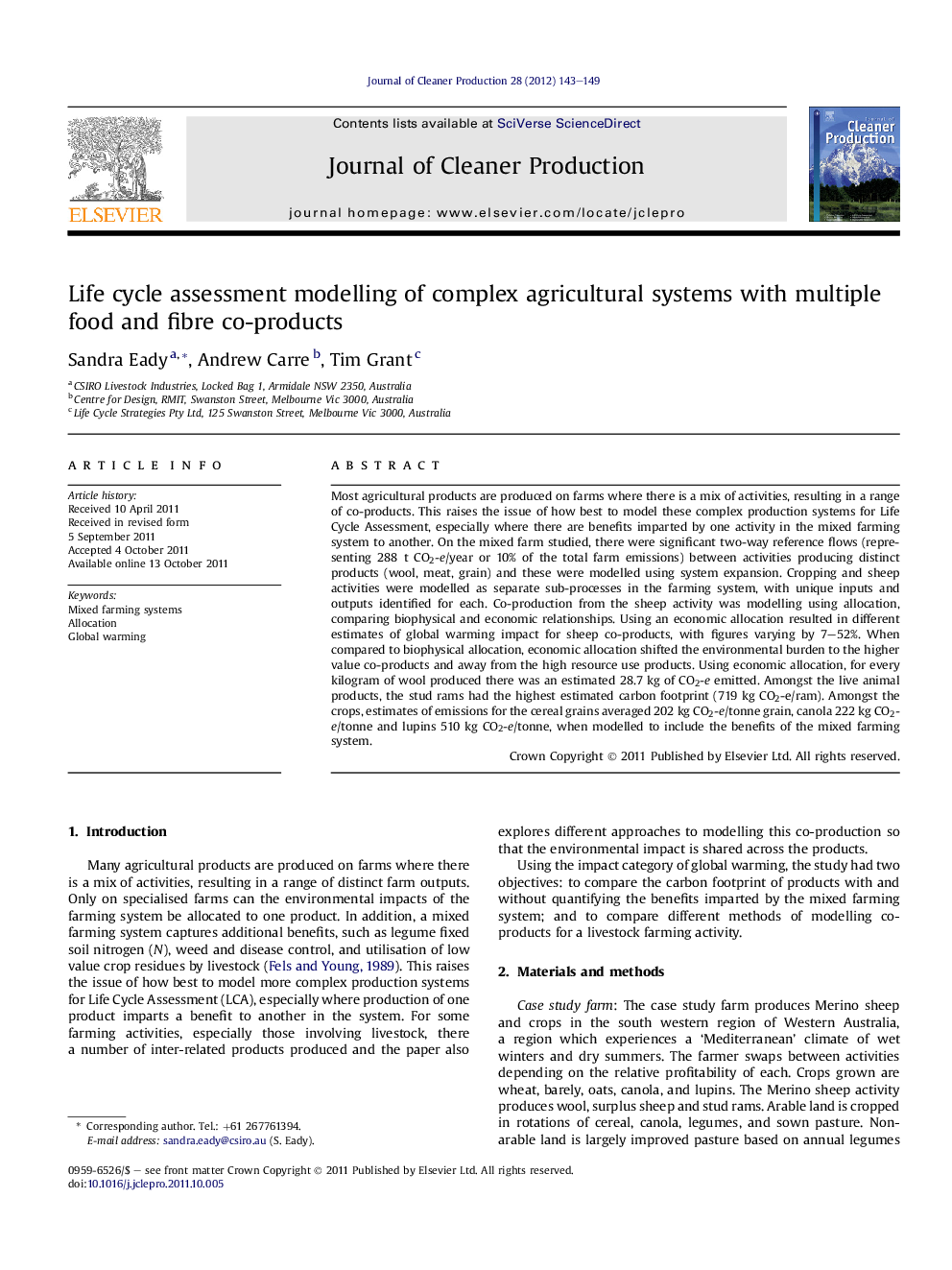| Article ID | Journal | Published Year | Pages | File Type |
|---|---|---|---|---|
| 1745722 | Journal of Cleaner Production | 2012 | 7 Pages |
Most agricultural products are produced on farms where there is a mix of activities, resulting in a range of co-products. This raises the issue of how best to model these complex production systems for Life Cycle Assessment, especially where there are benefits imparted by one activity in the mixed farming system to another. On the mixed farm studied, there were significant two-way reference flows (representing 288 t CO2-e/year or 10% of the total farm emissions) between activities producing distinct products (wool, meat, grain) and these were modelled using system expansion. Cropping and sheep activities were modelled as separate sub-processes in the farming system, with unique inputs and outputs identified for each. Co-production from the sheep activity was modelling using allocation, comparing biophysical and economic relationships. Using an economic allocation resulted in different estimates of global warming impact for sheep co-products, with figures varying by 7–52%. When compared to biophysical allocation, economic allocation shifted the environmental burden to the higher value co-products and away from the high resource use products. Using economic allocation, for every kilogram of wool produced there was an estimated 28.7 kg of CO2-e emitted. Amongst the live animal products, the stud rams had the highest estimated carbon footprint (719 kg CO2-e/ram). Amongst the crops, estimates of emissions for the cereal grains averaged 202 kg CO2-e/tonne grain, canola 222 kg CO2-e/tonne and lupins 510 kg CO2-e/tonne, when modelled to include the benefits of the mixed farming system.
